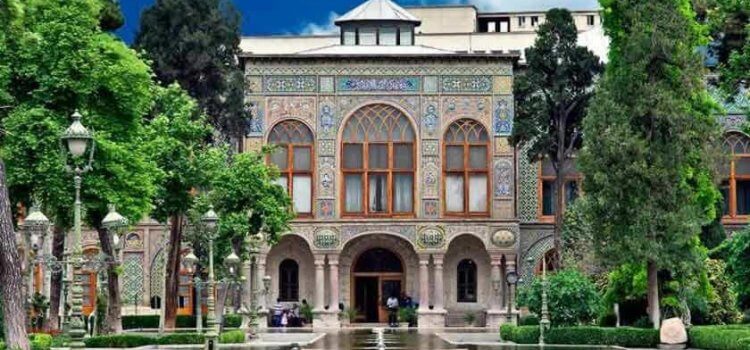Golestan Palace, or the Palace of Flowers, houses some of the capital’s oldest royal buildings and is one of the most prominent historic complexes in Iran. During the Qajar rule, this now UNESCO World Heritage site was considered as the political capital of the Qajar dynasty. It witnessed coronations of seven Qajar rulers as well as both of the Pahlavi kings.
As most of the buildings within the site date to the Qajar era, it is generally perceived as a Qajar palace complex. The true history of its origins, however, stretches far back to the Safavid period when, in 1580, Shāh Abbās I built a citadel in Tehran. Later on, between 1760 and 1767, Karim Khan Zand built a divān-khāneh (court or seat of the government) within the Safavid citadel and changed the main design of the complex. At present, only the Marble Throne Veranda and Karim Khāni Nook date to this period.
After Karim Khan’s death, Agha Mohammad Khan, the founder of the Qajar dynasty, took advantage of the ensuing civil unrest in Iran and expanded Qajar territory up to the cities of Tehran and Damghan. In 1795, he defeated the last king of the Zand Dynasty, Lotf Ali Khan, conquered Tehran the following year and declared himself the King of Iran. Aghā Mohammad Khan’s coronation at the Golestan Palace turned it into a place of unrivalled importance among the Qajar kings. Fat’h Ali Shah (1772-1834), who was also crowned here, commissioned further decoration and expansion of the palace complex.
Nāser al-Din Shah, impressed by the palaces he had visited in Europe, had the Palace extensively renovated, having it almost entirely reshaped. The complex did not undergo almost any changes until the fall of the Qajar dynasty in 1925.
Golestan Palace has subsequently witnessed coronations of the Pahlavi kings. During the reign of Reza Shah Pahlavi, all the surrounding buildings known as andaruni or haramsara (domestic spaces that are reserved for the women of the palace and are inaccessible to adult males except for close relations) were completely demolished. These andaruni spaces, known as Farah-ābād during the reign of Fat’h Ali Shah, consisted of several interconnected, exquisite yards surrounded by rooms of various sizes intended for female dwellers of the royal harem who would spend their allocated time with the monarch here. There have always been numerous stories surrounding the haramsara, as told by the favorite wives of the kings, or stories about the famous clown Aziz al-Soltan or the coquetries of Babri Khan, the royal cat whose sudden disappearance made the residents of haramsara melancholic.

